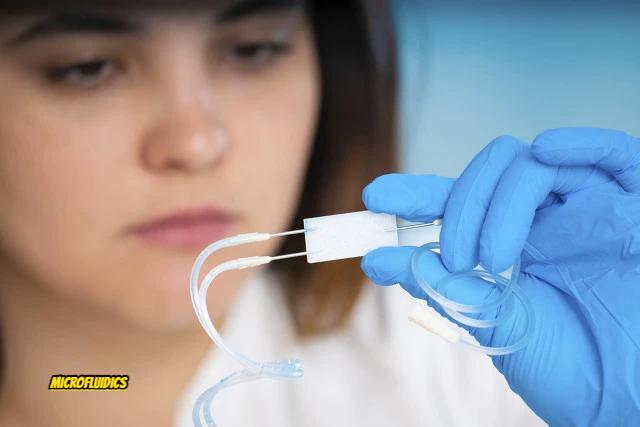Posted by gfhgfj lkjlkj
Filed in Announcements 276 views

Microfluidics is the technology of manipulating, practically operating and examining complicated fluids under external economic specifications. It is a new and upgraded cross-science that is basically developed in microelectronics, micromechanical devices, biotechnology and nanotechnology. So how much do you know about microfluidics? The following is the content of my comb about what is called microfluidic technology, looking forward to the big guys like!
Definition of microfluidics
In microbiology, organic chemistry, raw materials and other scientific experiments, it is often necessary to carry out practical operations on fluids, such as test product DNA preparation, liquid chromatography, PCR reflection, electrophoresis principle test and other practical operations are all carried out in the high efficiency liquid phase natural environment. If the process of sample preparation, biochemical reactions and results testing is to be integrated into the biochip, the amount of fluid commonly used for testing will drop from ml, microliter level to nanoliter or picoliter level, and this is when fully functional microfluidic equipment becomes indispensable. Thus, along with the development trend of biochip technology, microfluidic technology as an important support point technology for biochips is also gaining more and more interest.
Microfluidics in detail
Unlike microelectronic technology, microfluidics does not focus on reducing device specifications, it focuses on building microfluidic channel system software to accomplish a variety of complex microfluidic control roles. Similar to macroeconomic fluid system software, microfluidic system software requires devices that include pumps, valves, switching valves, filtration devices, separation devices, etc. Although the size of microchannels may seem very large in comparison to microelectronic devices, in fact this size is already very small for fluids. The individual behaviour of fluid flow in microchannels is fundamentally different from the individual behaviour of macroeconomic fluid flow that we hear about in everyday life, and therefore small devices such as micro-pumps, micro-valves, micro-switching valves, micro-filtration devices, micro-separation devices, etc. are often very different from their macroeconomic counterparts.
In order to be able to accurately design the devices often required in the software for the design of microfluidic systems, the flow properties of the fluid in the microchannel must first be defined. Today's confocal microscopy techniques allow for easy quantification of the full range of flow processes in microchannels, allowing for a high pixel count that was previously impossible.
Current status of microfluidics
The rapid development of microfluidics technology in recent years has led to disruptive impacts in the organic chemistry, pharmaceutical and bioscience industries.
Biochips are seen as a key tool for the interpretation of gene sequences in the Post-GenomeEra. Microfluidic biochips are now receiving tremendous attention. Microfluidic chips are also known as "Lab-on-a-chip". It is from the micro-electromechanical engineering technology will be applied to the general laboratory separation and purification of mixing, and its fruit enzyme reflective equipment to the chip, in order to carry out biochemical reactions, process management or analysis, its structure is far more complicated than the micro two-dimensional array chip, according to its scope of application can be further subdivided into: test products before the solution of the chip, reflective chip and analysis of the chip and other three categories. The microfluidic chip can perform complex and precise operations on small amounts of fluids (including liquids and vapours), such as mixing and separating out small amounts of fluids, chemical changes and trace elements. Microfluidic chips can also be used for the selection of scarce somatic cells, the acquisition and purification of information content deoxyribonucleic acid, high-throughput sequencing, single-cell dissection, protein crystallisation and other levels of distinctive effects. These microfluidic chips are used in a wide range of scientific research in microbiology due to their low volume, low volume of reagents, sensitive response, many parallel surface solutions and the ability to be thrown down.
Related Links: